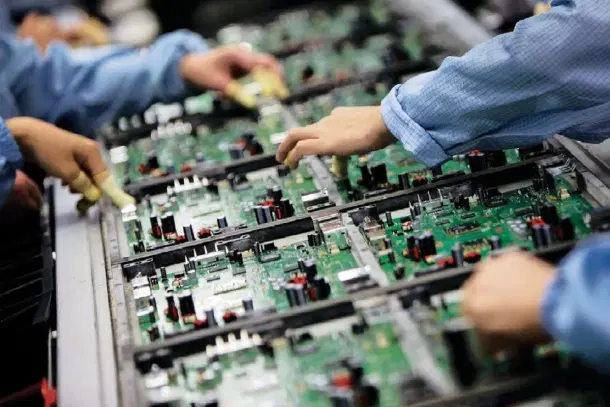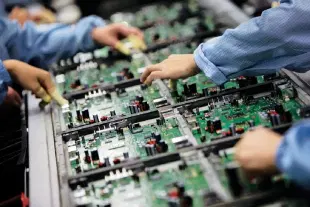Infrastructure
To Build On Manufacturing Success, PM Modi Calls For A Stronger 'Design In India' Initiative
Swarajya Staff
Aug 15, 2024, 01:12 PM | Updated Aug 19, 2024, 03:14 PM IST
Save & read from anywhere!
Bookmark stories for easy access on any device or the Swarajya app.


During his address from the Red Fort on India's 78th Independence Day, Prime Minister Narendra Modi emphasised the growing interest of global companies in investing in India, highlighting several key sectors, from mobile phones, and semiconductors to toymaking.
He urged state governments to compete in attracting these investments by formulating favourable policies and ensuring good governance and law and order.
"It is a golden opportunity to make India a global manufacturing hub," he said, urging state governments to create policies that attract investment while ensuring good governance and law and order.
India aims to position itself as a global manufacturing hub, especially as concerns grow over China's dominance and Western economies consider re-industrialisation.
India has already demonstrated success in mobile phone manufacturing, emerging as a major hub with increasing exports.
Recent data from the Department of Commerce shows that electronics exports surged by 22 per cent in the first quarter of the current financial year (FY25), reaching $8.44 billion, compared to $6.94 billion in the same period last year.
Mobile phones accounted for $4.8 billion of these exports, with iPhones contributing nearly three-fourths of the total mobile exports at $3.5 billion.
Apple has become the first global value chain (GVC) to partially relocate its supply chain from China to India, with the country now accounting for approximately 14 per cent of Apple's global production.
The rise in Apple iPhone exports has propelled electronics to the third position among India's top 10 exports in the April-June quarter of FY25.
As India now hosts companies like Apple and Samsung under the government's production-linked incentive scheme, Google has also begun producing its flagship Pixel smartphones in the country.
Previously, Google was the only major global smartphone brand not manufacturing in India.
Additionally, the government has consistently emphasised its commitment to boosting semiconductor and electronics production, with active plans to establish semiconductor fabrication plants in India by 2026.
Three major semiconductor projects are already underway — one at the Dholera Special Investment Region (DSIR) in Dholera, Gujarat, an Outsourced Semiconductor Assembly and Test (OSAT) facility in Sanand, Gujarat, and another OSAT facility in Morigaon, Assam — aimed at strengthening India's position in the global semiconductor industry.
Building on this momentum and advancing the ‘Make in India’ initiative, Prime Minister Modi highlighted the importance of incorporating ‘Design in India’ and ‘Design for the World’ into the country's strategy.
This focus on design marks the next phase of value addition in India's fast-evolving manufacturing ecosystem.
While the manufacturing sector has made significant strides in production and assembly, developing strong design capabilities and leveraging India's skilled workforce will further enhance the country's industrial ecosystem.
“We should aim to design in the country for the world. The Indian standards should become international standards. The country has the necessary talent for achieving this goal,” said Prime Minister Modi.




